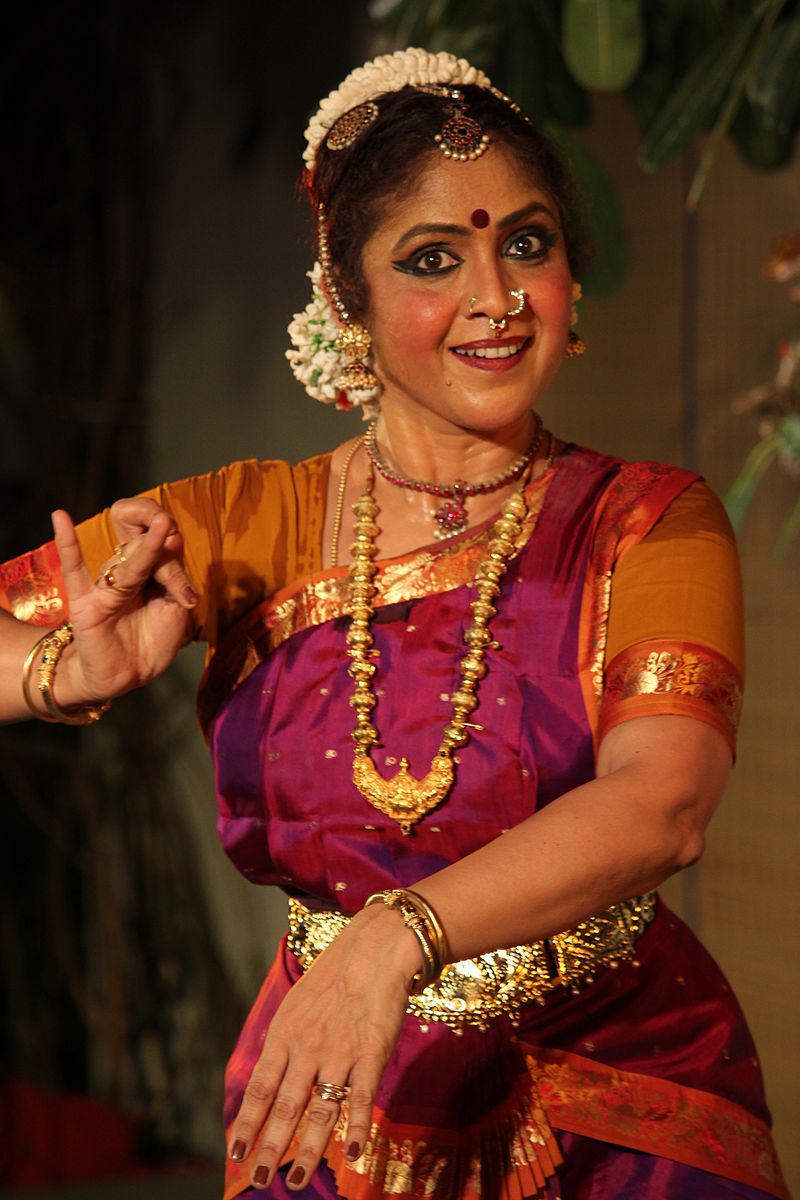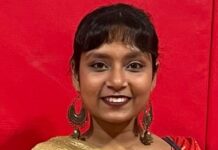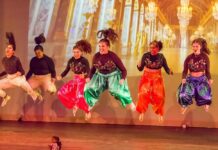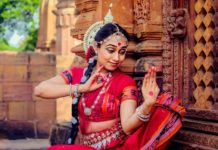By Pallavi Nagesha
INDIA New England Dance & Music Critic

CHELMDFORD, MA–I have seen rasa elicit strong emotions. A beautiful painting that can touch your soul, music that can make you fly, dance that can raise you to ecstasy. But, it is a rare occasion when a strong emotion elicits the perfect rasa. Watching Dr. Ananda Shankar Jayant was not like watching a river flow, but being the river itself, watching the banks dip and rise, stem and break swell and ebb in this emotional torrent. Be it her journey through the navarasa or her portrayal of Sita, Dr. Jayant flawlessly elicited a reaction so perfect and rare from her audience.
On Saturday, February 20, 2016, The Chelmsford high school auditorium was blessed by the presence of a soul as close to divinity as I have seen. Performing at a Manavseva fundraising event, Ananda elevated the collective conciseness of all those present, not just to a plane of joy, but to a deeper realm of dharma. As hearts and pockets opened Manavseva was blessed doubly that evening.
Ananda began her performance with Saint Thyagaraja’s Ramayana. As Kousalya, she gave her beloved Rama the moon. She depicted Vishwamitra’s pride when Rama killed Taataki and protected the revered yagna. As Raavana,
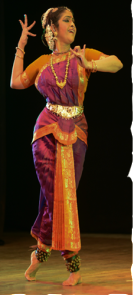
she instilled terror and disgust while, as Rama, she brought forth pride and a feeling of security. I was particularly struck by her portrayal of Sita. I have seen many accomplished dancers bring out the demure and steadfast qualities of Janaki. I have seen exemplary examples of Sita’s loyalty and love for her Rama. I have also seen the anguish and faith of a kidnapped princess. But Ananda’s bubbly, lighthearted Sita, took my breath away. The throes of puppy love was so gracefully and brilliantly portrayed. The desire and the feigned indifference, the thrill and the trepidation, that cocky, yet coy attitude, was all seen in Sita at once. “Sogasu chuda tarama” says the saint poet Thyagaraja. Ananda skillfully captured the ardor, wonder and reverence of Thyagaraja for his Lord Rama.
Dr. Jayant then continued with a Kuchipudi item that painted a picture of Lord Krishna’s antics in Brindavana. Stealing butter, annoying young maidens, only to enchant them once more, and all his naughty and heroic deeds were elegantly captured. The item ended with the famed plate dance.
Dr. Jayant’s last item was the Navarasa. “There is not story here” explained Ananda. “You can insert whatever you want to” she said. Explaining to us the concept which she titles “Expressions of Life”, she gave us a brief glimpse into her journey with cancer. Anger at the news of cancer, fear of what is to come next. Wonderment created by the supporting words of her husband. She also was disgusted by the smells of the hospital and triumphant when she was finally able to beat the disease. Sorrow came from her depleted reserves as she was waging this war and yet she was able to turn that frown upside-down and laugh at the absurdity. When she finally accepted her path and saw the affection and tender sentiments from her near and dear, she felt love and finally at peace. Life is divided into moments when you push and when you surrender. The Navarasa’s paint a beautiful picture of when to push through your emotions and when to surrender to them. When you finally and truly surrender, then our world may just fall into perfect harmony and we can reach for true piece. So what story would you put into the Navarasa? Here is my story….
Raaga Athana sets the mood for Raudra, or rage. A riot of emotions perfectly represented by the highly energetic foot movement, much like Kathakali. Ananda’s torso moved in sharp bursts of frenzy. It could be a mad elephant, an enraged demon, a scorned woman, an angry mob. To me, it was a denial of that one elusive cause of intense emotion and the human wish to simply “stomp” it out. A furor at one’s own vulnerabilities, which is a close cousin to fear. Bhaya, as portrayed by Dr. Jayant as fear for the uncharted future. With movements that folded into itself she was expertly able to show outside, what all of us feel inside. I saw that little trooper inside me that is terrified of facing the fear, but is determined to wade through the emotion and reach the other side of this fear.
As I swim, gasping and for breath and finally reach my shore, I am hit by this admiration for my own resilience. Adbhuta at the fluidity of my strength which ebbs and falls and finally has my back! Ananda’s movements here depict a rush of joy interspersed with surprise or astonishment that render this rasa in a unique color. As she segued into Bhibatsa, the movements looked small and shrunk. It reflected my own disgust at allowing myself to give in. As Ananda stepped over and shrank away from something revolting, I too felt myself rise above and feel the urge to push, to break free. The loathing, whether directed at yourself or the object of disgust, was palpable.
An overwhelming feeling of wanting to climb out of this feeling lingered and was met with Vira rasa, or valor. Ananda told me that she imagined the soldiers in the republic day parade, head held high, body erect and proud. As I followed the movement, expansive and inclusive, where she strut about in rhythm to the khanda or 5 beat pattern, it seemed like there is no mountain too high, no valley too low, no river too wide. I believed then, that I could grasp this bull by the horns and meet it head-on! Once this breakthrough occurred, I could only feel pity for my old self who held on to those other emotions. Ananda began the Kaarunya rasa and I felt not just compassion, but a deep sadness. A feeling of exhaustion and the need to hide away and melt into yourself. Almost as if grieving this time lost in self doubt and self pity and suddenly, the “ha-ha-ha” of Haasya or mirth sweeps you up.
Ananda decided to portray the absurd. “I laughed at my ridiculous crying face” she says. It’s not far form what we feel. After all, sadness and joy both come from that same emotion. That which can make you shed copious tears is the very same thing that can make you convulse with laughter. All we need to do is look inside. When you do, you just may see the truth reflected back and it fills you with bliss. With the solkattu and the portrayal of the nonsensical, Ananda brought our a Seussesque quality of life. One where Sringara, or love, starts within yourself. To trust yourself and believe that you are capable of anything you set your mind to, is the beginning of love, of acceptance. You can then look around and find that you have the affection and support of everything and everyone around. Take strength from that and move into that universe where everything is in balance. Shanti, or peace, the last rasa which takes you to that ultimate universe of truth and joy. With graceful moves and yogic postures, Ananda seemed to exude the sense of the everlasting. Bereft of all emotions, your soul is the perfect canvas for the universe to paint its indelible message. In perfect harmony with all that surrounds you, yet, not pushing, nor surrendering, just being.
I see a river that has flown over hills and through vales. Seen floods and drought, and now, content and calm, the river is now ready to join the might ocean. What do you see?


